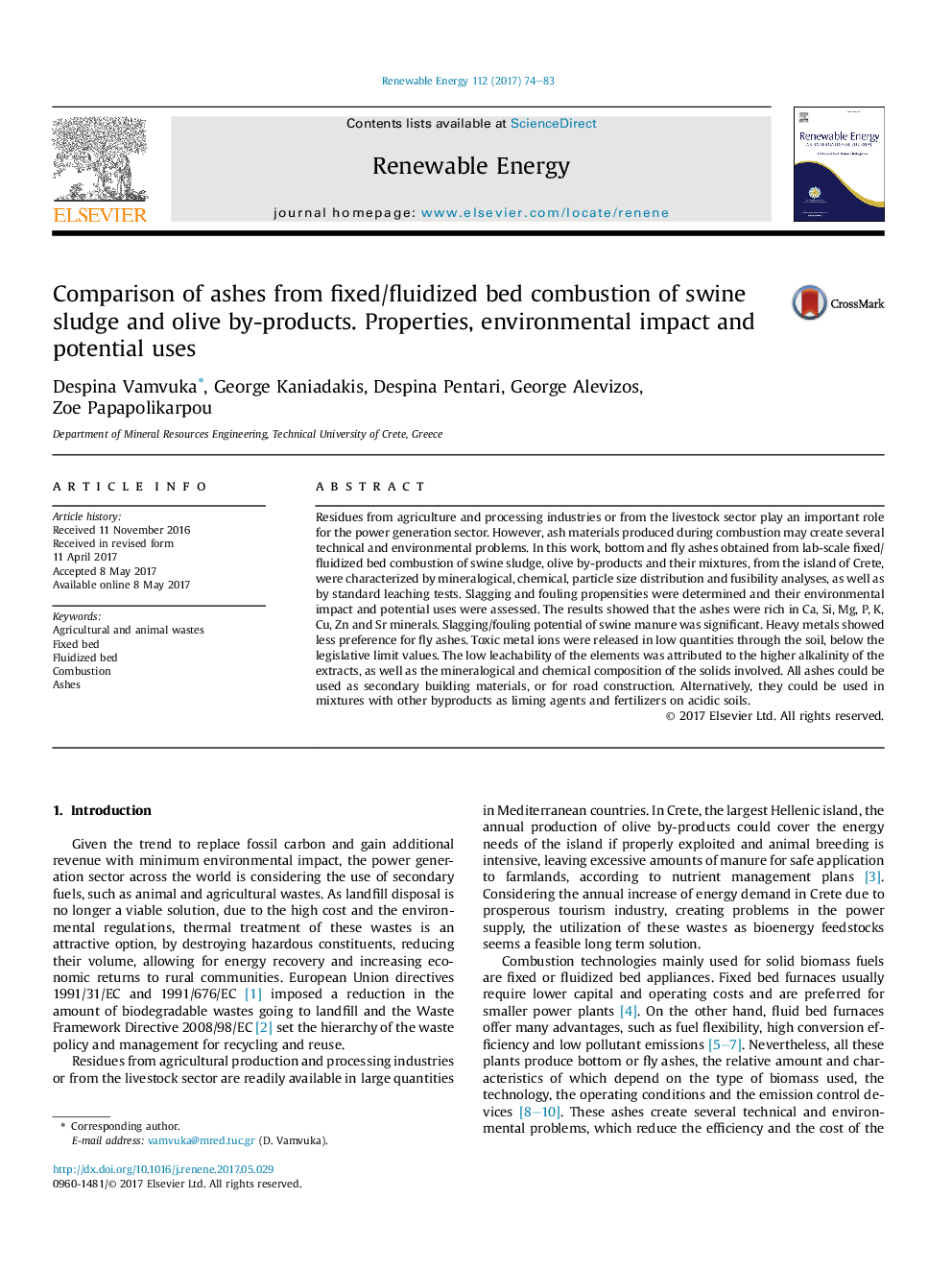| Article ID | Journal | Published Year | Pages | File Type |
|---|---|---|---|---|
| 4926114 | Renewable Energy | 2017 | 10 Pages |
Abstract
Residues from agriculture and processing industries or from the livestock sector play an important role for the power generation sector. However, ash materials produced during combustion may create several technical and environmental problems. In this work, bottom and fly ashes obtained from lab-scale fixed/fluidized bed combustion of swine sludge, olive by-products and their mixtures, from the island of Crete, were characterized by mineralogical, chemical, particle size distribution and fusibility analyses, as well as by standard leaching tests. Slagging and fouling propensities were determined and their environmental impact and potential uses were assessed. The results showed that the ashes were rich in Ca, Si, Mg, P, K, Cu, Zn and Sr minerals. Slagging/fouling potential of swine manure was significant. Heavy metals showed less preference for fly ashes. Toxic metal ions were released in low quantities through the soil, below the legislative limit values. The low leachability of the elements was attributed to the higher alkalinity of the extracts, as well as the mineralogical and chemical composition of the solids involved. All ashes could be used as secondary building materials, or for road construction. Alternatively, they could be used in mixtures with other byproducts as liming agents and fertilizers on acidic soils.
Related Topics
Physical Sciences and Engineering
Energy
Renewable Energy, Sustainability and the Environment
Authors
Despina Vamvuka, George Kaniadakis, Despina Pentari, George Alevizos, Zoe Papapolikarpou,
